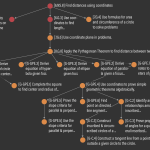Modeling COVID-19 disruptions via network mapping of the Common Core Mathematics Standards
Abstract
This paper develops a mathematical and computational modeling approach that provides a data-driven platform to address research questions relating to student pathways in K-12 education. Specifically, this paper uses scalable network modeling to create a model of the Common Core Mathematics Standards. The result is an educational map that formally represents the Standards and the relationships among them. This educational map is represented mathematically as a network model that forms the basis for computational graph analytics and visualization to identify Standards and learning pathways of interest. Using the network model, we model the disruption due to COVID-19 related school closures in Spring 2020.
